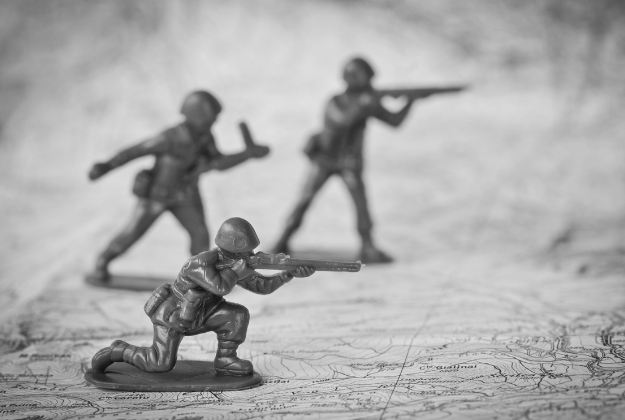
Welcome to www.leuluandco.com! Our website is using Cookies.
To enhance your experience, we use cookies. By clicking ‘Continue,’ you consent to the use of all cookies. To learn more about how we handle your data, please review our Privacy Policy.

In the world of government contracting, your proposal is your battle plan, and words are your primary ammunition. But in today’s visually saturated world, text alone often falls short. To truly conquer the competition and capture those coveted contracts, your proposal team needs a powerful visual arsenal at their disposal.
Think of it this way: would you send soldiers into battle with only swords when the enemy has tanks? Of course not. Similarly, relying solely on text in your proposals when your competitors are wielding compelling graphics puts you at a significant disadvantage.
To effectively equip your proposal team for graphic warfare, consider these key elements:
The Right Software: Just as soldiers need reliable firearms, your team needs access to user-friendly and powerful design tools. Options range from intuitive platforms like Canva for quick wins to more robust software like Adobe Illustrator for custom creations. Even mastering the smart use of PowerPoint’s graphic capabilities is crucial.
Data Visualization Expertise: Raw data is useless in a fight. Your team needs the skills to transform spreadsheets into compelling charts, graphs, and infographics that tell a clear story. Understanding different chart types and when to use them is paramount.
Infographic Mastery: Infographics are your visual storytelling heavy artillery. They allow you to present complex information in a visually engaging and easy-to-understand format.
Branding Consistency: Every visual element should be aligned with your company’s brand. Consistent colors, fonts, and styles reinforce your identity and create a professional impression.
Image and Icon Proficiency: Knowing where to find high-quality, relevant images and icons – and how to use them effectively – is essential for adding visual interest without creating clutter.
Strategic Use of White Space: Just as tactical retreats can be crucial in warfare, white space in design provides breathing room and enhances readability. Don’t overcrowd your visuals.
Accessibility Awareness: Ensure your visuals are accessible to everyone, including those with visual impairments. This includes using alt text for images and adhering to color contrast guidelines.
Having the tools isn’t enough; you need a strategy for deployment:
In the competitive landscape of government contracting, a proposal laden with dense text is like sending an unarmed soldier into battle. Equip your team with a powerful visual arsenal. By mastering the art of visual communication, you can capture attention, simplify complexity, enhance understanding, and ultimately, conquer the competition to win more contracts.

Get a Free Consultation to Discuss Your Project Goals Today!
To enhance your experience, we use cookies. By clicking ‘Continue,’ you consent to the use of all cookies. To learn more about how we handle your data, please review our Privacy Policy.



